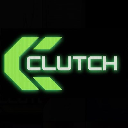-
 bitcoin
bitcoin $87706.997328 USD
2.23% -
 ethereum
ethereum $2845.033150 USD
1.23% -
 tether
tether $0.999595 USD
0.02% -
 xrp
xrp $2.074054 USD
3.48% -
 bnb
bnb $846.140045 USD
0.19% -
 solana
solana $132.574402 USD
2.19% -
 usd-coin
usd-coin $0.999795 USD
0.03% -
 tron
tron $0.276369 USD
0.57% -
 dogecoin
dogecoin $0.146864 USD
3.51% -
 cardano
cardano $0.413357 USD
1.25% -
 bitcoin-cash
bitcoin-cash $555.623837 USD
1.32% -
 hyperliquid
hyperliquid $32.859432 USD
5.18% -
 zcash
zcash $574.673847 USD
-1.35% -
 chainlink
chainlink $12.654621 USD
2.52% -
 unus-sed-leo
unus-sed-leo $9.467473 USD
0.30%
Can I lose more than my initial capital when trading SOL contracts?
Leverage in SOL contracts amplifies gains and losses, with risks of liquidation and potential debt on unprotected platforms despite negative balance safeguards on major exchanges.
Oct 29, 2025 at 02:37 am

Understanding Leverage in SOL Contracts
1. Trading SOL contracts often involves the use of leverage, which allows traders to control a larger position with a smaller amount of capital. This mechanism amplifies both potential gains and losses. When using 10x, 25x, or even higher leverage, a relatively small move against the position can result in significant losses.
2. Exchanges offering futures or perpetual contracts on Solana (SOL) typically require traders to deposit margin as collateral. This margin acts as a security against potential losses. If the market moves unfavorably and the loss exceeds the available margin, the position may be liquidated.
3. While most centralized exchanges automatically close losing positions once the margin is depleted—preventing negative balances—certain conditions may still expose traders to additional risk. For example, extreme volatility or slippage during rapid price movements can cause execution at worse-than-expected prices.
Risk of Negative Balances
1. In typical scenarios on major platforms like Binance, Bybit, or OKX, users cannot lose more than their deposited margin due to a feature called 'negative balance protection.' This means that if a liquidation occurs and the system incurs a loss beyond the user’s equity, the exchange absorbs that cost.
2. However, this protection is not universal across all platforms. Some lesser-known or decentralized derivatives exchanges may not offer such safeguards. Traders on these platforms could theoretically owe money if their position collapses under extreme market conditions and the underlying protocol demands repayment.
3. Flash crashes or network congestion on blockchain-based trading systems can delay order execution, leading to fills at highly unfavorable rates. In such cases, even with stop-loss mechanisms, the final settlement might leave the trader with a deficit.
Platform-Specific Protections and Risks
1. Reputable centralized exchanges implement insurance funds designed to cover shortfall losses from liquidated positions. These funds help ensure that one user’s loss does not impact others and prevent clawbacks from profitable traders.
2. On regulated and well-established platforms, it is extremely rare for traders to lose more than their initial capital when trading SOL contracts. The combination of automatic liquidation, insurance funds, and negative balance protection creates a buffer against excessive liability.
3. Decentralized finance (DeFi) protocols, however, operate differently. Smart contract-based lending and derivatives platforms may require over-collateralization and lack real-time liquidation guarantees. Network congestion or oracle delays can lead to incorrect pricing, increasing the chance of undercollateralized positions going unresolved until corrected manually.
Managing Exposure in Volatile Markets
1. Setting conservative leverage levels—such as 2x to 5x instead of maximum available options—can drastically reduce the likelihood of abrupt liquidation. Lower leverage provides breathing room during normal market fluctuations.
2. Utilizing take-profit and stop-loss orders helps automate risk management. Even if a trader is unable to monitor the market continuously, these tools can limit exposure without manual intervention.
3. Monitoring funding rates in perpetual contracts is essential. High or rapidly changing funding fees can erode profits over time, especially in trending markets where long or short positions become heavily imbalanced.
4. Regularly checking open interest and order book depth gives insight into market sentiment and potential slippage risks. Thinly traded contracts are more susceptible to sudden price swings that can trigger unexpected liquidations.
Frequently Asked Questions
Can my account go into debt after trading SOL futures?Most top-tier exchanges have systems in place to prevent accounts from going negative. If your position is liquidated, the platform usually covers any remaining deficit through its insurance fund. You will not be billed for the difference on these platforms.
Do DeFi derivatives platforms allow losses beyond initial deposits?Some decentralized platforms may expose users to further obligations if smart contracts enforce debt positions due to undercollateralization. Unlike centralized services, there may be no automatic write-off of deficits, meaning theoretical liability could extend beyond initial capital.
What happens during a flash crash while holding a leveraged SOL position?During a flash crash, price oracles may lag, and liquidations can occur at distorted prices. Although exchanges aim to process liquidations fairly, temporary glitches might result in executions far from fair market value, potentially increasing losses beyond expected levels.
Is it possible to opt out of negative balance protection?Users cannot opt out because the protection is built into the exchange's risk engine. It functions automatically to maintain platform stability and protect both traders and the exchange from cascading liabilities.
Disclaimer:info@kdj.com
The information provided is not trading advice. kdj.com does not assume any responsibility for any investments made based on the information provided in this article. Cryptocurrencies are highly volatile and it is highly recommended that you invest with caution after thorough research!
If you believe that the content used on this website infringes your copyright, please contact us immediately (info@kdj.com) and we will delete it promptly.
- Trump, Bitcoin, and Underwater Holdings: A New York Minute on Crypto's Wild Ride
- 2025-11-25 02:00:01
- New Zealand's Digital Finance Revolution: Integrating Crypto into the School Curriculum
- 2025-11-25 00:30:01
- Enlivex, Rain Token, and a $212M Treasury: A Bold Bet on Prediction Markets
- 2025-11-25 01:50:01
- Decoding the Crypto Buzz: Dogecoin ETFs, USDC on Monad, and Bitcoin's Institutional Backing
- 2025-11-25 01:50:01
- Zero Knowledge Proof, FC Barcelona, and ONDO FET: A Crypto Game Changer?
- 2025-11-24 23:30:02
- Altcoins, Crypto, and Moonshots: Finding the Next Big Thing
- 2025-11-24 23:45:01
Related knowledge

What is a Fill or Kill (FOK) order and how does it differ from an Immediate or Cancel (IOC)?
Nov 24,2025 at 12:00pm
Understanding Fill or Kill (FOK) Orders1. A Fill or Kill (FOK) order is a type of trade instruction that demands the entire order be executed immediat...

What is the difference between price action and using indicators for trading?
Nov 21,2025 at 07:40pm
Understanding Price Action in Trading1. Price action refers to the movement of a cryptocurrency's price over time, visualized through candlestick char...

How does an exchange's matching engine work for futures orders?
Nov 22,2025 at 03:00am
Understanding the Core Mechanism of Futures Order Matching1. When a trader places a futures order on a cryptocurrency exchange, the instruction is sen...

What is a Time-Weighted Average Price (TWAP) order and when should it be used?
Nov 21,2025 at 10:00pm
Understanding Time-Weighted Average Price (TWAP) Orders1. A Time-Weighted Average Price (TWAP) order is an algorithmic trading strategy designed to ex...

What is the Commitment of Traders (COT) report for Bitcoin futures and how to read it?
Nov 21,2025 at 12:40am
Understanding the Commitment of Traders (COT) Report in Bitcoin Futures1. The Commitment of Traders (COT) report is a weekly publication by the U.S. C...

How do you manage a losing futures position without liquidating?
Nov 23,2025 at 12:00am
Understanding the Dynamics of Futures Trading1. Futures trading in the cryptocurrency market involves leveraging positions to amplify potential gains,...

What is a Fill or Kill (FOK) order and how does it differ from an Immediate or Cancel (IOC)?
Nov 24,2025 at 12:00pm
Understanding Fill or Kill (FOK) Orders1. A Fill or Kill (FOK) order is a type of trade instruction that demands the entire order be executed immediat...

What is the difference between price action and using indicators for trading?
Nov 21,2025 at 07:40pm
Understanding Price Action in Trading1. Price action refers to the movement of a cryptocurrency's price over time, visualized through candlestick char...

How does an exchange's matching engine work for futures orders?
Nov 22,2025 at 03:00am
Understanding the Core Mechanism of Futures Order Matching1. When a trader places a futures order on a cryptocurrency exchange, the instruction is sen...

What is a Time-Weighted Average Price (TWAP) order and when should it be used?
Nov 21,2025 at 10:00pm
Understanding Time-Weighted Average Price (TWAP) Orders1. A Time-Weighted Average Price (TWAP) order is an algorithmic trading strategy designed to ex...

What is the Commitment of Traders (COT) report for Bitcoin futures and how to read it?
Nov 21,2025 at 12:40am
Understanding the Commitment of Traders (COT) Report in Bitcoin Futures1. The Commitment of Traders (COT) report is a weekly publication by the U.S. C...

How do you manage a losing futures position without liquidating?
Nov 23,2025 at 12:00am
Understanding the Dynamics of Futures Trading1. Futures trading in the cryptocurrency market involves leveraging positions to amplify potential gains,...
See all articles










































































